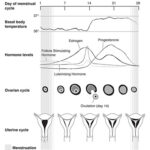The question of “Where Was Jesus Buried” has captivated believers and historians for centuries. While the New Testament provides accounts of his burial after the crucifixion, the precise location remains a subject of debate and archaeological exploration. Jerusalem holds several sites that have been proposed as the tomb of Jesus, each with varying degrees of historical and archaeological support. Among the most discussed are the Talpiot Family Tomb, the Garden Tomb, and the Church of the Holy Sepulchre. Let’s delve into each of these locations to examine the evidence and shed light on this enduring mystery.
The Talpiot Tomb: A Discredited Theory
Discovered in 1980, the Talpiot Tomb gained notoriety following the 2007 documentary The Lost Tomb of Jesus. This film controversially suggested that this tomb was the actual burial place of Jesus and his family. A key piece of “evidence” presented was an ossuary inscribed with “Jesus, son of Joseph.” However, this theory has been widely discredited by both archaeologists and biblical scholars.
Critics point out several flaws in the Talpiot Tomb theory. Firstly, the name “Jesus” was extremely common in Judea during the 1st century BC and AD. Finding an ossuary with this name is not statistically significant evidence. Furthermore, the idea that Jesus, from a humble background in Nazareth, would have been buried in an expensive family tomb in Jerusalem is highly improbable. Archaeological and historical context strongly suggests that the Talpiot Tomb is simply one of many family tombs from that era and has no specific connection to Jesus of Nazareth. The claim of it being Jesus’ tomb lacks credible supporting evidence and is largely considered a sensationalized media narrative.
The Garden Tomb: Picturesque but Historically Implausible
The Garden Tomb emerged as a potential site in the late 19th century. British General Charles Gordon identified a nearby rocky escarpment resembling a skull, reminiscent of “the place called the Skull” mentioned in the Gospels as the site of Jesus’ crucifixion (John 19:17). This association led to the Garden Tomb being proposed as an alternative to the traditional site.
Alt text: Skull Hill escarpment near Garden Tomb, Jerusalem, resembling a skull, linked to Golgotha.
The Garden Tomb is undeniably located in a serene garden setting, aligning with the biblical description of Jesus’ tomb being in a garden. It is also situated outside the current walls of Jerusalem, consistent with the historical understanding that both Jesus’ crucifixion and burial occurred outside the city walls (Hebrews 13:12). This site has become a popular place for pilgrimage and reflection.
However, archaeological evidence presents a significant challenge to the Garden Tomb’s authenticity. Studies of the tomb and surrounding burial sites indicate that it was likely carved around 600 years before the time of Jesus. This makes it highly improbable that the Garden Tomb was a “new” tomb at the time of Jesus’ burial, as described in the Gospels. While a peaceful and evocative location, the Garden Tomb lacks the historical and archaeological support to be considered the actual tomb of Jesus.
The Church of the Holy Sepulchre: The Most Compelling Site
In contrast to the other two locations, the Church of the Holy Sepulchre is frequently cited by archaeologists as possessing the most compelling evidence for being the authentic burial site of Jesus. Archaeological investigations suggest that the area under the church was indeed a Jewish cemetery outside the walls of Jerusalem in the first century. This aligns with the historical context of Jesus’ crucifixion and burial.
Historical accounts from the 4th century further strengthen the Church of the Holy Sepulchre’s claim. Eusebius, a renowned early church historian, documented that Emperor Constantine dispatched a delegation to Jerusalem in 325 AD to locate Jesus’ tomb. Local tradition pointed to a Roman temple built by Emperor Hadrian after the destruction of Jerusalem, which was believed to be situated over Jesus’ tomb. Upon razing the temple, the Romans reportedly discovered a tomb beneath it. Constantine then ordered the top of the cave to be cut away and a shrine to be built around it, marking the beginning of the Church of the Holy Sepulchre.
Alt text: Ornate interior of Church of Holy Sepulchre, Jerusalem, traditional site of Jesus’ burial and resurrection.
Recent archaeological dating techniques have confirmed that parts of the Church of the Holy Sepulchre date back to the 4th century, corroborating the historical accounts of Constantine’s construction. While the church has undergone numerous additions and renovations over the centuries, the core site preserves what is believed to be the location identified in the 4th century as Jesus’ tomb.
While scholars acknowledge that definitive proof remains elusive, the Church of the Holy Sepulchre stands as the most historically and archaeologically supported candidate for the location of Jesus’ burial. It continues to be a significant site for Christian pilgrimage and reflection, representing a tangible connection to the foundational events of Christianity.

